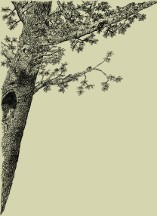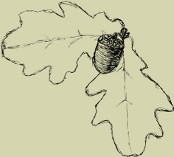42 41 40 39 38 37 36 35 34 33 32 31 30 29 28 27 26 25 24 23 22 21 20 19 18 17 16 15 14 13 12 11 10 9 8 7 6 5 4 3 2 1
Issue 32 (2001)
The aim of this research project was optimisation of the supporting structure of a single-seat armchair with respect to the stability and cross section dimensions of all of its elements. The optimisation was carried out with the use of numeric method using Algor computer program. True mechanical properties of materials used and levels of normal stress caused were taken into account in the method. The new model of the supporting structure retained its stability and guaranteed optimal strength parameters.
Key words: computer, optimisation, strength, stability
Studies were conducted on natural resistance of about 60 years old beech trees' wood against two fungi: Fomes fomentarius and Laetiporus sulphureus. The wood was sampled from stands of different health status, from northwestern and southeaster Poland. The trees sampled represented three degree of damage. The wood resistance against decay was determined basing on the loss of weight of wood samples after 60 and 90 days of activity of test fungi.
Key words: beech wood, wood decay, tree healthiness, natural resistance, Fomes fomentarius, Laetiporus sulphureus
Studies of gelation and hardening processes of MUF resins with the viscometrical and thermal analysis methods. It was stated among others that the process of preliminary gelation described on the base of the viscometrical method in the range of temperature 50-70°C for the majority of tested glue mixtures took place accordingly to the similar mechanism, and its relation order is contained in the range 1.34-1.55.
The objective of the study was determination of the amount of active ions included in the CCB and CB preservatives diffusing from wood to water in individual stages of leaching. Wood in the form of samples applied in testing fungicidal properties with the agar-block method were treated with tested preservatives and then leached according to the standard EN 84. Moreover, there was investigated the influence of the initial water soaking of treated wooden samples on leaching dynamics of copper and chromium ions.
Key words: leachability, CCB and CB preservatives, AAS analysis, active ions, EN 84
The scope of this paper was the knowledge of long term hardening of glue layer of MUF resin on structural changes with used DTA, TG and FTIR-PAS analysis, and extraction in boiling water.
It was stated among others that: most intensive decomposition took place in the range 280-380°C, the mass losses in 40-250°C is dependent upon degree of crosslinking, and independent use of relative forms assumptions of the Kissinger's and izoconversion Ozawa-Flynn-Wall methods to the kinetics description of decomposition of MUF polycondensates in the considerable way, wideness characteristics of the analysed processes.
Transmission-reflection NIR spectroscopy was applied for qualitative and quantitative investigations of liquid amino (UF and MUF) adhesive resins. NIR spectra of resins were characterized with the used PLSR (partial last square regression) and MLR (multiple linear regression) methods
Key words: NIR spectroscopy, wood adhesive, MUF, UF, melanine content
The study on ultrasonic waves velocity in tension wood and opposite wood of beech species, in three basic anatomic directions, were carried out. The experiments wave made on wood with three moisture contents, namely on green wood, wood with moisture content 7% and on oven dry wood.
Key words: beech, tension wood, opposite wood, ultrasonic waves velocity
Sectional dendrometrical methods allow to obtain reliable results in determination of share of the heartwood and sapwood in tree stem. Appearing lately mathematical models such as “Lignum” presented in Silva Fennica are giving quite another results. In this paper presented are effects of the age and site fertility upon share of heartwood and sapwood in stems of Scots pine.
Key words: age of tree, site fertility, share of heartwood, mathematical model “Lignum”
The fungitoxic value of six different wood preservatives (tests formulation CCB type, commercial formulation CB type, Tri-n-butylin oxide, dimetyl, didecylamonium chloride, 3-iodo-2-propynylbutyl carbamate tebuconazole) against T. viride was determined in the screening test. The tested fungicides were put on five different types of the base (solid beech and pine wood, beech, birch and pine veneer). The results show that TBTO and IPBC were the most effective fungicides regardless of the base. It was stated, that biocidal activity of tested fungicides was lower in the case of veneers than in the solid wood.















 Download PDF
Download PDF